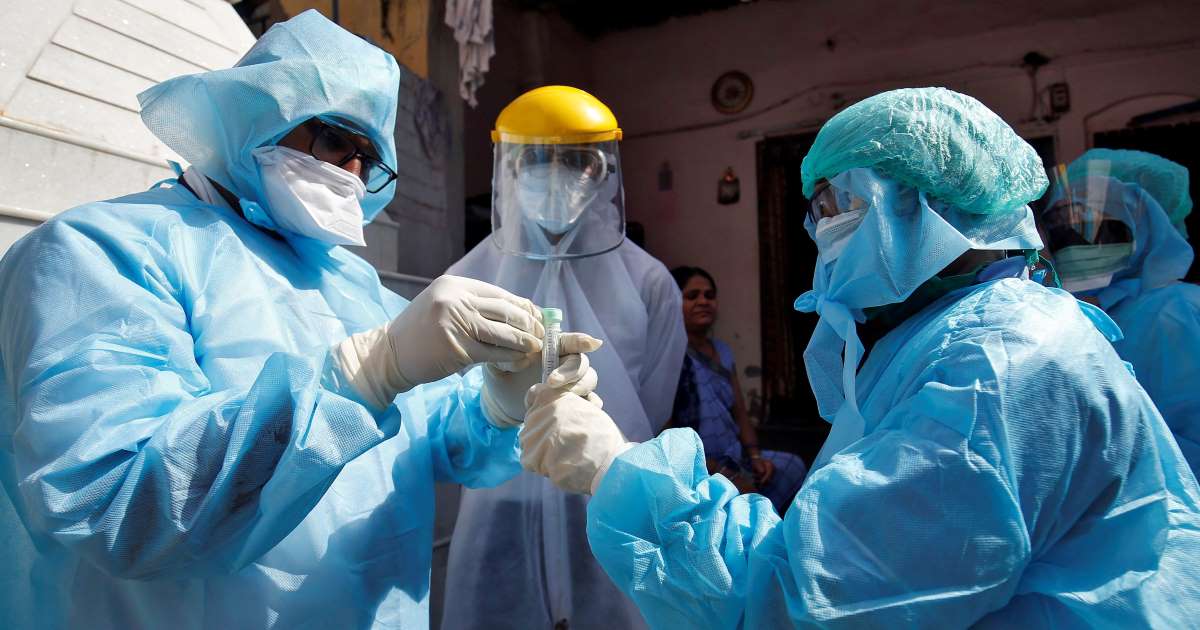COVID Taught Me A Doctor’s Job Goes Beyond Just Prescribing Medicines

In December 2019 when the first outbreak of coronavirus at Wuhan was making news, people in Odisha never imagined what the future had in store. For overseas returnees, screening protocols were already in place, but few paid attention. I was then working as Medical Officer of a UPHC in Bhubaneswar.
In late January, I got a call from Government of India officials informing me about a group from Australia who had to be screened and quarantined as part of COVID-19 prevention protocol. That was the first time I came in direct contact with what was going to be a lifetime’s experience. Slowly, cases started mounting. On March 8, WHO declared COVID-19 as a ‘Pandemic – once in a century’.
Government bodies in slumber were suddenly in action. As the medical officer of the area, I had to issue many advisories to the local public, plans for COVID-safety in the hospital, move around different schools to kick-start awareness programmes and monitor behavioural protocols.
As the OPDs were closed, we were moved to various other departments with different responsibilities in the management of COVID-19. I was privileged enough to be part of the first official telemedicine unit of the state — the 104 COVID Helpline.
As OPDs were closed and hospitals were running with over-strained capacity, we were tasked with an uphill mission of treatment, counselling and monitoring the overall healthcare facility virtually.
At the beginning, the people were not comfortable with the concept of telemedicine. But slowly trust was built. In the middle of the lockdown and peak of COVID transmission, when hospital OPDs were shut and people were in dismay, 104 worked silently as a silver lining in providing expert clinical attention as well as psychological solace to the callers.
COVID-19 had hit hard, especially those poor people who were dependent heavily on the PHCs and CHCs for all ailments. While interacting with thousands of callers, it was clear that COVID-19 surely hit our system hard, but the Government — just as the mighty Kumbhakarna — began fighting the pandemic upfront.
After the March 23 lockdown, roads and streets were empty, and it was only the healthcare workers (HCW) who were moving around. We were busy in silently yet effectively managing the COVID-related medico-social complications. The system was under a great stress but tough times bring the best out of you and that’s how we were managed.
Finally, when I moved to Baripada to take charge of a COVID Care Centre for 15 days, I thought my next phase in this pandemic time was beginning. On the eve of leaving Bhubaneswar, there was anxiety, uncertainty and fear in the eyes of my parents and relatives because the pandemic was at its peak in September and October.
Running a hospital in a remote location was a herculean task, especially when you had to live life under house arrest with very little connection and communication with the outside world. My team arrived in Baripada with the news of increased patient load, which meant increased strain.
Life was restricted to a hospital bed for patients who were COVID positive. Food, water, air was there for survival; but through the foggy lens of the PPE kit I could see people struggling. COVID patients needed a full-round treatment with ‘empathy’ as their relatives had forbidden them. Parents were crying to see their children, mothers were separated, old ailing parents were pushed into a social disconnect. There was a lot of agony all around.
Hat off to those sisters and other healthcare staff who stood for hours along with these patients counselling them, comforting them and consoling the ones who were losing a dear one. Those 10 days were like 10 decades to the patients.
At the end of each day, when I sat down to sign the death summaries it was a reality check, indicative of the rapidness with which the pandemic was engulfing. There were moments during the regular rounds where patients eagerly waited to hear few comforting words in Odia.
The experience of those 15 days is there to stay for the rest of my life as it not only gave a clinical experience, but more than that it taught me a doctor’s job is not just to prescribe medicines, it is much beyond that. Healing lives is easy, but touching lives is the ultimate achievement.
The next 15 days of quarantine was a time of reflection — many fellow doctors would have passed through similar feelings. We were talking with people like we have not spoken to them for ages. Detoxifying the stress and strain of COVID-19 duty, we were back at work.
Since my area of expertise is social and preventive medicine, the next big phase of life was the preparedness and execution of the COVID-19 Vaccination Campaign. On January 16, 2021, when the COVID-19 vaccination campaign began at KIMS, I realized life is nearing a complete circle. The time when COVID was at its peak, people were worried and anxious how early can there be a vaccine. But when the vaccines did come, that too in a record time of just 10 months, there was a good amount of hesitancy.
Today, nearly 4000 HCWs and an equal number of senior citizens have been vaccinated in our campus with the first and second doses, and we are heading towards achieving 100% coverage.
Realization is that COVID-19 has not just affected our lives, it has changed our way of life as well. Yes, there is increased focus on improvisation of the medical infrastructure and R&D in the country. But there is a huge potential of great public health initiatives, and there is an even greater chance to rise, rediscover and revamp our existing system while remembering those who laid down their lives fighting this pandemic.

Comments are closed.